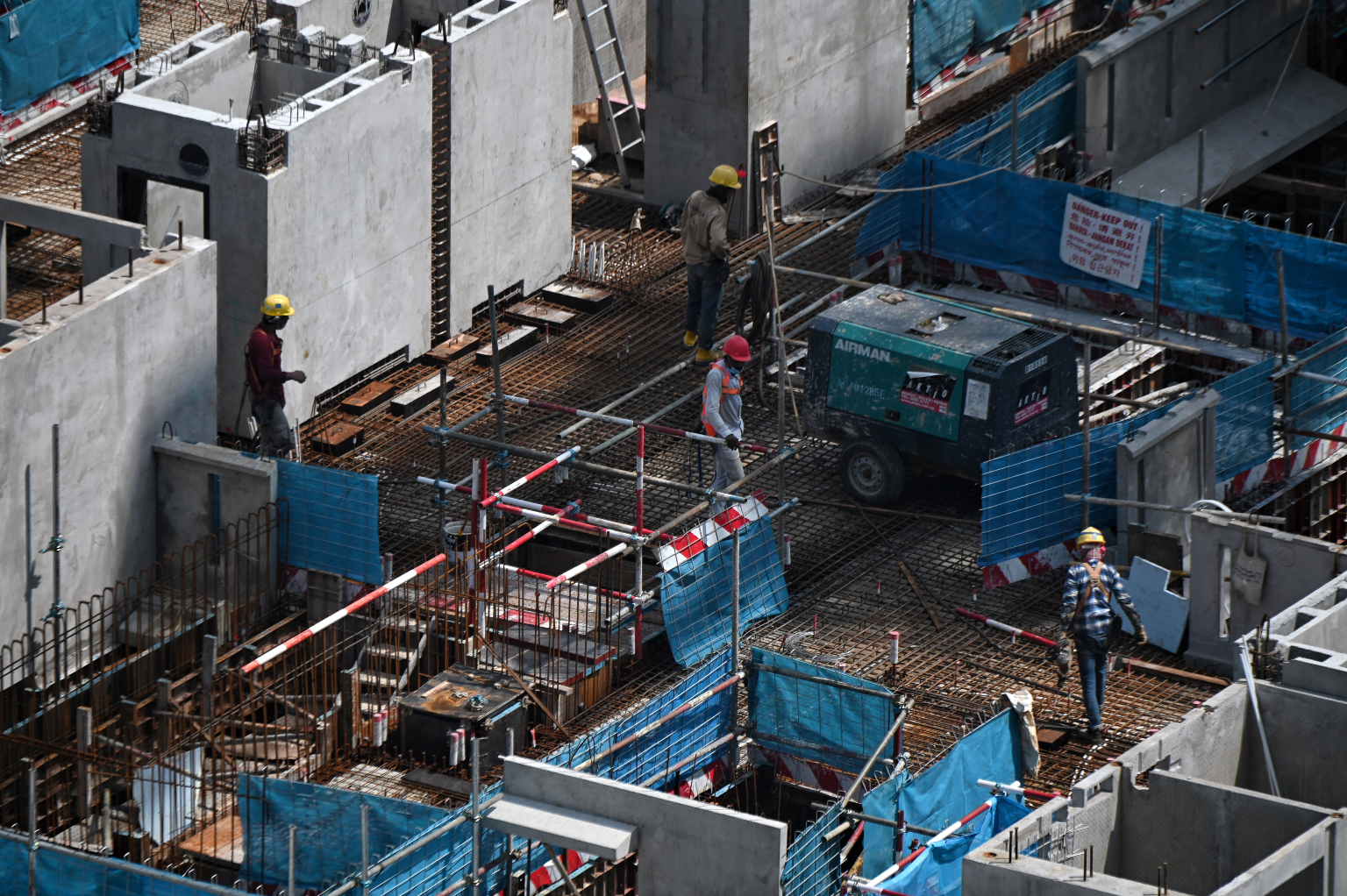Workplace fatalities back to pre-Covid-19 level; MOM to enhance training, surveillance on firms
Sign up now: Get ST's newsletters delivered to your inbox

Singapore's goal is to reduce the fatality rate to below one per 100,000 workers by 2028.
ST PHOTO: KUA CHEE SIONG
Follow topic:
SINGAPORE - There were 37 workplace fatalities recorded last year, close to the 39 deaths in pre-pandemic 2019.
The figure for 2020 was lower at 30, but there were significant disruptions to work that year due to the pandemic.
The Ministry of Manpower (MOM) is set to enhance surveillance on companies and improve worker training to make the workplace safer.
MOM, releasing annual statistics on workplace safety and health on Tuesday (March 29), said the number of deaths in 2019 and last year both translate to a workplace fatality rate of 1.1 per 100,000 workers.
Singapore's goal is to reduce the fatality rate to below one per 100,000 workers by 2028.
To stem workplace fatalities and injuries, the ministry said it will introduce heftier fines against offenders and companies that fail to ensure machinery is used safely, particularly in the manufacturing industry.
It will also increase surveillance at workplaces with noise hazards and exposure to hazardous chemicals, and expand safety training for new workers.
Senior Minister of State for Manpower Zaqy Mohamad said Singapore is on track to meet its 2028 target of reducing the fatality rate to below one per 100,000 workers.
Speaking to the media last week, he said: "Every one of us has a duty of care to ensure that our workplaces remain safe and healthy environments for workers, allowing workers to return home to their families safely."
He urged companies to remain committed to protecting their workers' safety and health, and take measures to prevent even the smallest injury by carrying out proper risk assessments and implementing risk control measures.
"If you look at the types of fatalities and injuries that have been reported before, you can see that many of them are preventable," he said.
Mr Zaqy added that MOM will be stepping up enforcement to ensure company leadership takes ownership of the safety and health of their workers.
This comes after the fatality rate spiked in the first half of 2021 to 0.7 per 100,000 workers, up from 0.4 in the second half of 2020, before returning to 0.4 in the second half of 2021.
A total of 23, or just under two-thirds, of the total fatalities last year occurred in the first half of the year.
The top causes of fatalities last year were vehicular-related accidents, in which 11 workers died; falls from height which eight workers died from; and fires and explosions, which killed five workers.
MOM said it will continue to use technology including collision alert systems and rider behaviour monitoring systems to address vehicular-related accidents and strengthen enforcement and engagement efforts to prevent falls from height.
The construction industry accounted for the highest number of fatalities with 13 deaths, followed by the transportation and storage industry where there were nine fatalities.
Major injuries also climbed to 610 last year, up from 463 in 2020. Last year's figure represents a slight decrease compared with 2019 when there were 629.
However, taking into account the smaller workforce last year, the major injury rate last year increased to 18.5 injuries per 100,000 workers, up from 18.1 in 2019.
To better educate new workers on safety, MOM and the Workplace Safety and Health Council have expanded the construction safety orientation course to include experiential training where workers will be trained in a construction site simulator with physical mock-ups.
MOM is also working with training providers to ensure that there is enough capacity to support the inflow of workers.
Mr Zaqy said: "We hope this gives them an idea of the expected standards in Singapore, and they can let relevant parties know if the standards fall short at their workplaces."

Occupational disease among workers on the rise: MOM
The number of workers contracting health conditions or disorders as a result of their work environment or activities climbed to 659 last year, up from 494 the year before, and 517 in 2019.
The occupational disease incidence rate increased to 20 cases per 100,000 workers in 2021, from 15 in 2020 and 14.8 in 2019.
MOM said the increase was largely due to medical assessments and cases being delayed from 2020, because of disruptions caused by the Covid-19 pandemic.
Work-related musculoskeletal disorders, which include injuries or disorders of the muscles, nerves, tendons, joints, cartilage and spinal discs, made up 379, or more than half of all occupational diseases last year.
The second-most common occupational disease was noise-induced deafness, which accounted for 168 cases, followed by occupational skin diseases, which made up 79 cases.
MOM said on Tuesday that the Workplace Health Surveillance programme will be enhanced to ensure that companies implement risk control measures to prevent these occupational diseases.
It noted that currently there is a heavy reliance on mitigation efforts through the use of personal protective equipment instead of reducing or eliminating exposure to such risks.
"This is why MOM will target at-risk workplaces with noise hazards and exposure to hazardous chemicals (including combustible dust) and support such companies to put in place appropriate workplace health programmes to reduce or eliminate exposure to their workers," said the ministry.


